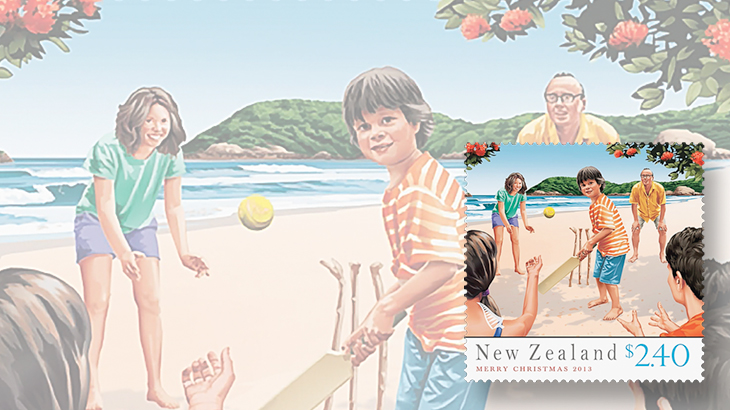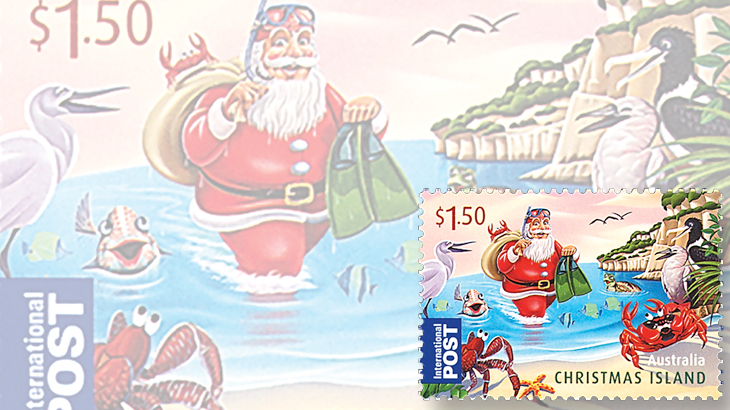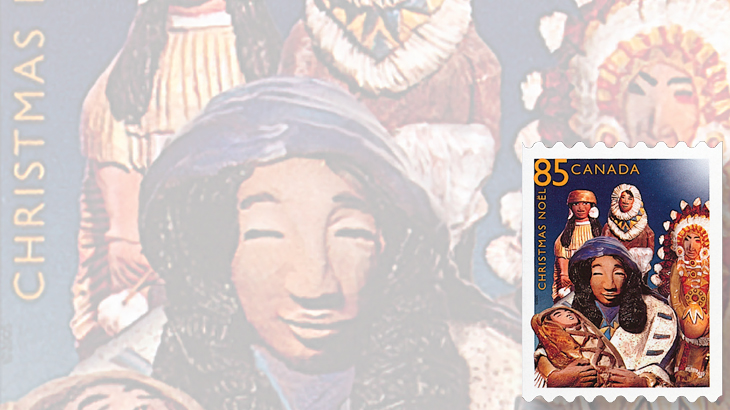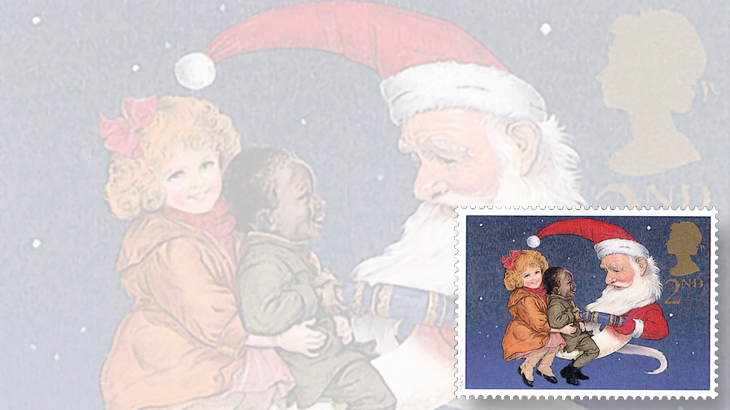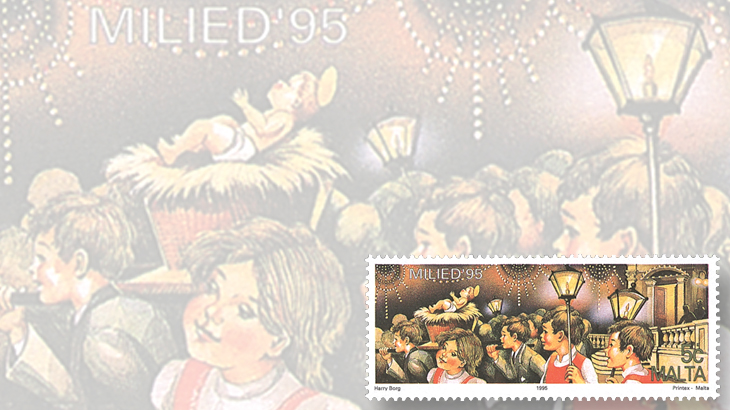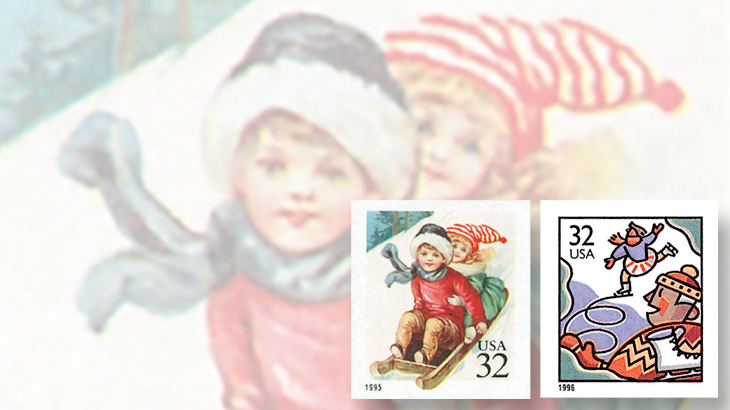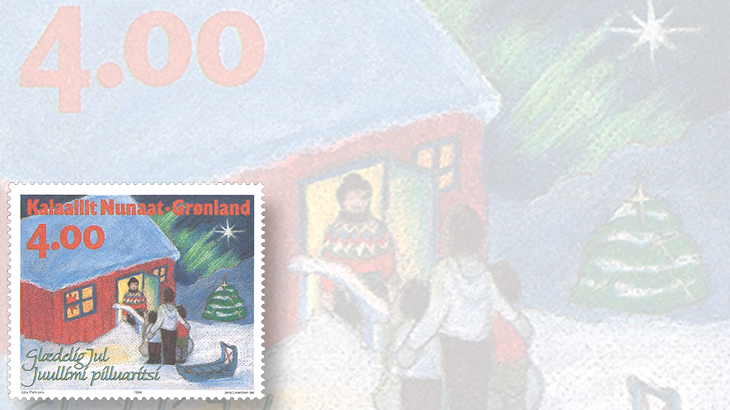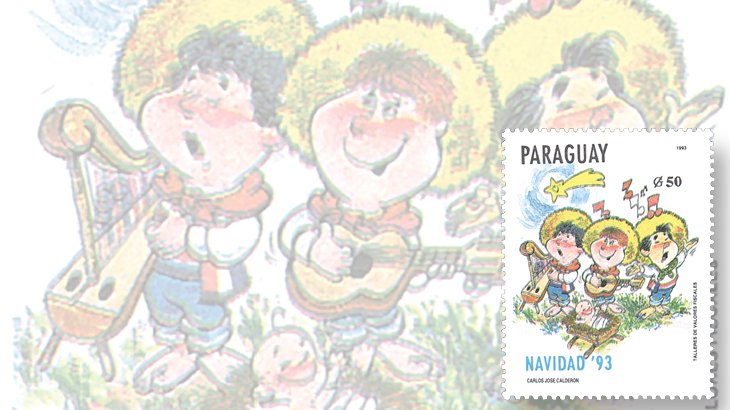World Stamps
Stamps show Christmas celebrations around the world
By Janet Klug
The winter holidays are upon us, with greetings and festive messages for Christmas, Hanukkah and Kwanzaa circulating in the postal mails, most of them with special seasonal stamps affixed.
Here in the Northern Hemisphere we are used to seeing holiday cards and stamps featuring snowy scenes. Our friends living in the Southern Hemisphere have a very different holiday season: their December means summer, not winter, and that season is reflected on their holiday stamps.
In the mostly cold and frequently snowy Northern Hemisphere, Santa needs his heavy fur-trimmed red coat and a reindeer-powered sleigh. Children make snowmen like the one shown on a 17-penny stamp issued by Great Britain in 1990 (Scott 1340). The family might go skiing, as depicted on a 1959 Russia 40-kopeck stamp (2203), or enjoy sledding or ice skating, as shown on United States 32¢ stamps from 1995 (3013) and 1996 (3117).
In contrast, families in the Southern Hemisphere might frequent beaches on a sunny, warm Christmas day.
Christmas dinner in New Zealand could be a picnic on the beach, followed by a pickup game of cricket, as shown on the $2.40 stamp in that country’s 2013 Christmas set (Scott 2487).
Caroling looks a little different in the Southern Hemisphere, too, as evidenced by a Paraguay 50-guarani stamp from 1993 (Scott 2463) showing three children playing musical instruments and singing to a baby in a manger.
Santa seems to vacation in the Southern Hemisphere when he has completed his around-the-world journey. He dons a wet suit and goes scuba diving on Christmas Island on Scott 498, a $1.50 stamp from 2011.
Christmas traditions are amazingly varied from one place to another. On Christmas Eve in Malta, it is a tradition to name one young boy to give the sermon at midnight Mass. This boy also carries the statue of baby Jesus during the children’s procession, a custom depicted on a 1995 5¢ stamp (Scott 874).
Greenlanders have a lovely practice of putting an illuminated star in their windows, as seen on a 1994 4-krone stamp (Scott 275). Greenland is within the Arctic Circle where the sun does not rise in the winter, so this custom must add a welcome bit of extra light in a very dark time for homes and towns.
Many nations, especially within the British Commonwealth, have traditional Christmas crackers decorating their dinner table on Christmas Day. A cracker consists of a brightly wrapped cardboard tube that contains a toy, a party hat or paper crown, and a joke or riddle.
Pairs of people at the table pull the ends of a cracker, much like the custom of two people pulling a wishbone. The cracker makes a loud pop (hence its name), and the contents fall out. On a Great Britain second-class stamp from 1997 (Scott 1776), Santa appears as the man in the moon while pulling a cracker with the help of two children.
Many nations have issued Christmas Nativity stamps in designs that reflect each country’s heritage. Paraguay, for example, released a 300g Christmas Nativity stamp in 1999 that portrays a Paraguayan farm family as the Holy Family (Scott 2626).
Canada issued three different nativity scenes on stamps in 2005. One is traditional, one is contemporary, and the third shows an Inuit nativity grouping (Scott 2126).
Collecting Christmas stamps from around the world will give you a new and different appreciation for the holiday, and like Charlie Brown, you might discover the true meaning of Christmas.
To pursue this interesting topical specialty, consider joining the Christmas Philatelic Club.
Merry Christmas and Happy Holidays!
MORE RELATED ARTICLES
Headlines
-
US Stamps
Oct 7, 2024, 3 PMMcMurtrie dismissed as APS education director following Sept. 21 arrest
-
US Stamps
Oct 7, 2024, 12 PMVasiliauskas named president of Mystic Stamp Co.
-
US Stamps
Oct 6, 2024, 5 PMApgar souvenir card available
-
US Stamps
Oct 6, 2024, 4 PMFirst Continental Congress and U.N. stamps receive Scott catalog numbers
